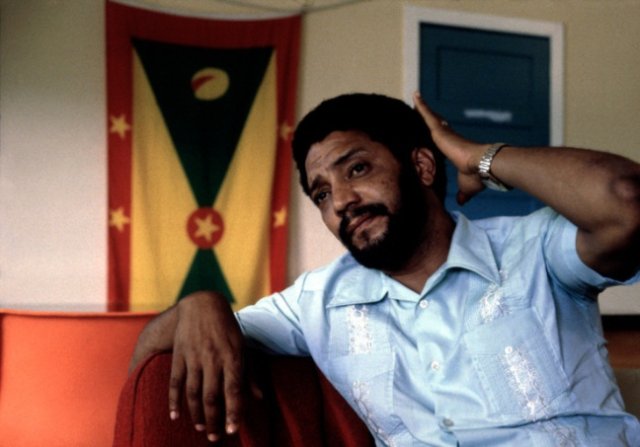
Maurice Bishop.
During a debate in Miami earlier this year between the candidates for the Democratic presidential nomination, Bernie Sanders came out against the Monroe Doctrine.
This doctrine dictates that the United States government could intervene throughout the hemisphere and overthrow whatever government does not suit Washington.
Sanders insisted: “The United States was wrong to try to invade Cuba ... the United States was wrong trying to support people to overthrow the Nicaraguan government … the United States was wrong trying to overthrow, in 1954, the democratically-elected government of Guatemala.”
Sadly, the countries listed by Sanders are just a few of the many instances where the US government interfered in the domestic affairs of a country in order to satisfy the imperial ambitions of the US.
One often overlooked imperialist adventure was the 1983 US invasion of the small Caribbean nation of Grenada.
The objective of the invasion was the consolidation of a pro-US regime after the assassination of the charismatic left-wing prime minister Maurice Bishop.
Bishop came to power in March 13, 1979, as the head of the revolutionary democratic New Jewel Movement, which staged a bloodless coup against the pro-US regime of Eric Gairy.
Bishop's ability to connect with the Grenadian people has been favourably compared with Fidel Castro’s bond with the Cuban people or Hugo Chavez’s closeness to the Venezuelan masses.
Much like the modern day revolutionary processes in Latin America and the Caribbean, the revolutionary government in Grenada sought to build a society that favoured the great majority of people.
The government built schools, led a huge literacy campaign, sought to develop the countryside and provide employment to the people. Thanks to the efforts of the revolutionary government, in four years the unemployment rate dropped from 49% to 14%.
Don Rojas, who worked as a press secretary for Bishop, explained the orientation of the revolutionary government in a 2004 Democracy Now! interview: “Maurice Bishop was attempting to empower the Grenadian people, a people who had a long history of slavery, followed by British colonialism, followed by independence in 1974 …
“Maurice Bishop’s vision for Grenada was of a small country standing tall and proud in the Caribbean region and in the world community. He was able to bring his message very successfully of a new way for Grenada and the Caribbean to the world, to the United Nations, to the Non-Aligned Movement … and received tremendous acclaim around the world at a time.”
Bishop was a firm internationalist. Grenada was perceived as a threat precisely because then-US president Ronald Reagan feared that other Caribbean countries would follow the country’s example.
Bishop told the New Internationalist magazine in 1980: “I think Washington fears that we could set an example for the rest of the region if our revolution succeeds.
“In the Caribbean region you’re talking about small countries with small populations and limited resources, countries that over the years have been classic examples of neo-capitalist dependencies. Now you have these new governments like [the revolutionary Sandinista government in] Nicaragua and Grenada that are attempting a different experiment.”
As part of its internationalist and integrationist vision, the Bishop government also sought close ties with Cuba’s revolutionary government. Bishop was a great admirer of Castro and held high praise for the Cuban Revolution as an example for the region.
In a speech in Havana in 1980, Bishop said: “Your revolution, comrades, has also provided the region and the world with a living legend in your great and indomitable leader, Fidel Castro.
“Fidel has taught us not only how to fight, but also how to work, how to build socialism, and how to lead our country in a spirit of humility, sincerity, commitment and firm revolutionary leadership.”
The Cuban government sent hundreds of advisers and, as part of an effort to end Grenada’s isolation, helped build an airport on the island.
The US government jumped on this development project. Reagan claimed it was actually an effort by the Soviet government to establish another foothold in the hemisphere. He insisted it formed part of an effort at “Soviet-Cuban militarisation” and that the airport would serve as a “military bastion to export terror”.
This kind of demagoguery would later serve to help justify the US invasion.
In October 1983, internal divisions within the New Jewel Movement led to a dramatic split. Bishop was arrested and then assassinated. This internal chaos provided the pretext for the US to order the invasion by about 7600 soldiers, an overwhelming amount of troops for the tiny country of about 100,000 people.
The US government intended to oust Bishop all along. They had conducted a military exercise in 1981 in Puerto Rico that was effectively a mock invasion of Grenada.
The disproportionately large invasion was deliberate. It was an effort to dissuade other revolutionary movements in the region from daring to try what Grenada had attempted. But to this day, Grenada's short-lived revolutionary process is still remembered and honoured.
[Reprinted from TeleSUR English.]